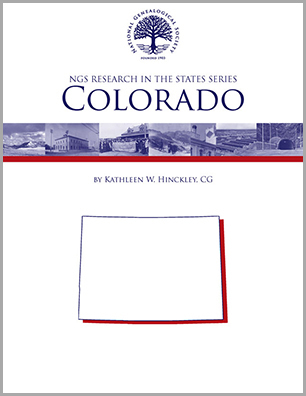 Originally the domain of numerous Native American tribes—including the Arapaho, Cheyenne, Pawnee, Sioux, and Ute—Colorado’s first non-native settlements were not established until the mid-eighteenth century. In 1858, gold was discovered and tens of thousands of people seeking their fortune poured into the territory. The completion of the first transcontinental railroad in 1869 and a spur line to Denver in 1870 heralded the next surge in the state’s population, which grew from 39,864 to 194,327 in ten years. Settlers came from the East and the Midwest as well as from Canada, England, Germany, and Ireland. Many became ranchers and farmers. Over time its population diversified to include African Americans, Chinese, Hispanics, Japanese, Jews, et.al.
Originally the domain of numerous Native American tribes—including the Arapaho, Cheyenne, Pawnee, Sioux, and Ute—Colorado’s first non-native settlements were not established until the mid-eighteenth century. In 1858, gold was discovered and tens of thousands of people seeking their fortune poured into the territory. The completion of the first transcontinental railroad in 1869 and a spur line to Denver in 1870 heralded the next surge in the state’s population, which grew from 39,864 to 194,327 in ten years. Settlers came from the East and the Midwest as well as from Canada, England, Germany, and Ireland. Many became ranchers and farmers. Over time its population diversified to include African Americans, Chinese, Hispanics, Japanese, Jews, et.al.
Research in Colorado offers family historians and genealogists a wealth of information about the state’s repositories and their records, including Spanish, Mexican, and federal land records; ethnic and naturalization records; military and territorial records; and vital records. Readers will also learn where to find probate, railroad, religious, and tax records. Newspaper, gazetteers, atlases, maps as well as city and county directories are included in this valuable guide book.
Published by NGS, Research in Colorado is one volume in the Research in the States series. This guidebook was edited by Kay Haviland Freilich, CG, CGL, FNGS, and Ann Carter Fleming, a Fellow of NGS. It is available for purchase in the NGS online store in both PDF and print versions.

 Kathleen W. Hinckley, CG, is the executive director of the Association of Professional Genealogists. She specializes in forensic genealogy and in searching for heirs and other lost relatives. An author of several books, she also has published articles in the NGSQ, OnBoard, Heritage Quest Magazine, and Family Tree Magazine.
Kathleen W. Hinckley, CG, is the executive director of the Association of Professional Genealogists. She specializes in forensic genealogy and in searching for heirs and other lost relatives. An author of several books, she also has published articles in the NGSQ, OnBoard, Heritage Quest Magazine, and Family Tree Magazine.